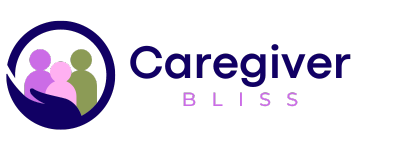Clock Drawing Test | Glossary Definition

As our loved ones gracefully age, it becomes increasingly important to monitor their cognitive health. The Clock Drawing Test (CDT) has emerged as a valuable tool in assessing cognitive function, particularly in the elderly.
In this article, we delve into the intricacies of the Clock Drawing Test and its significance in gauging the cognitive well-being of our aging parents.
The Clock Drawing Test Explained
The Clock Drawing Test is a non-invasive, widely used screening tool for detecting cognitive impairments such as dementia and Alzheimer's disease. It is a brief assessment that provides valuable insights into a person's cognitive abilities, including memory, executive function, and visuospatial skills.
How it Works
Elderly individuals are typically instructed to draw a clock that displays a specific time, usually "10 past 11." This choice of time requires the inclusion of both numbers and hands on the clock face, providing a comprehensive assessment of cognitive functions.
Components of Assessment:
- Clock Face: Examiners evaluate the accuracy of the clock face, focusing on the placement of the numbers, their sequence, and the symmetry of the clock.
- Numbers and Hands: The test examines whether the numbers are correctly placed in a clockwise manner and if the clock hands point to the specified time.
Scoring
The Clock Drawing Test is scored based on a set of predefined criteria, and results can vary from a perfect score to varying degrees of impairment. Deviations from the expected representation can indicate potential cognitive issues.
Interpreting the Results
Normal Performance
- A well-drawn clock with accurately placed numbers and hands typically suggests intact cognitive function.
- Minor variations may be considered within the normal range.
Abnormal Performance
- Omission of Numbers: Missing numbers or placing them incorrectly could signal memory issues.
- Misplacement of Hands: Inaccurate representation of the clock hands may indicate difficulties with visuospatial processing.
- Spatial Distortions: Asymmetry or disproportionate drawings may suggest cognitive impairment.
Further Assessment
The Clock Drawing Test is not a diagnostic tool on its own but serves as an initial screening. Abnormal results may prompt further cognitive assessments and medical evaluation.
Practical Applications for Elderly Parents
- Early Detection: Regular administration of the Clock Drawing Test can aid in the early detection of cognitive decline, enabling timely intervention and support.
- Monitoring Cognitive Health: Tracking changes in performance over time allows caregivers and healthcare professionals to monitor cognitive health and make informed decisions about care and support.
- Communication with Healthcare Providers: Sharing the results of the test with healthcare providers facilitates a collaborative approach to managing cognitive health, ensuring that appropriate interventions are implemented.
Conclusion
The Clock Drawing Test serves as a valuable ally in the quest to understand and support the cognitive health of our elderly parents. By incorporating this simple yet effective assessment into routine care, we can enhance our ability to detect cognitive changes early and promote a higher quality of life for our aging loved ones.
We invite you to share your thoughts and experiences in the comments section below. Have you ever used the Clock Drawing Test as a tool to assess cognitive function in your elderly loved ones? What insights or challenges have you encountered? Your valuable contributions can spark meaningful conversations and provide a supportive space for others navigating similar experiences. Let's come together to foster a community that champions the well-being of our aging parents.
Dementia Resource Page
Dig deeper into understanding dementia. Visit our comprehensive Dementia Resource Page for valuable insights, practical tips, and expert guidance on navigating the complexities of dementia and striving to provide the best possible quality of life for your loved one.
Caregiver Bliss Glossary
Ready to deepen your understanding of the elderly family caregiver industry? Don't miss out on our comprehensive Caregiver Bliss Glossary, a treasure trove of definitions and insights. Visit our glossary page now to explore a diverse range of terms and concepts that will enrich your knowledge and empower your caregiver journey.
Free Caregiver Bliss Weekly Email Newsletter
 Are you a dedicated family caregiver looking for valuable resources, support, and advice to enhance your caregiving journey?
Are you a dedicated family caregiver looking for valuable resources, support, and advice to enhance your caregiving journey?
Look no further! Our Caregiver Bliss Weekly Email Newsletter is designed to provide you with the latest insights, tips, and updates tailored specifically for family caregivers like you.
Sign up now and gain access to a wealth of information and support that can help you navigate the challenges and joys of caregiving.
